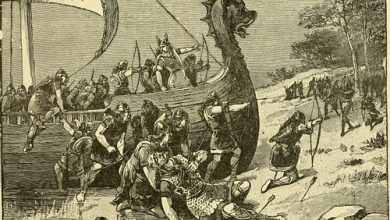Dum Aloo Recipe: A Indian side dish recipe

Baked turkey, alone, with stuffing or marinade: three ways to enjoy this Christmas delightBaked turkey, alone, with stuffing or marinade: three ways to enjoy this Christmas delight
A pantry full of spices is essential in my kitchen, and that is why I am fascinated by approaching gastronomies like that of India, where they are essential. I still have a lot to learn about its cooking, but in the meantime, I take the opportunity to adopt appetizing recipes such as dum aloo, a red curry of baby potatoes with yogurt.
Ingredients
For 2 persons
- Cherry or baby potatoes: 8
- Chopped chili (seedless so it is less spicy): 1
- Black or green cardamom: 1
- 1 teaspoon cumin grain
- 1 teaspoon coriander grain
- 1/2 teaspoon grain anise
- 1/2 teaspoon fennel seeds
- Black peppercorns 6
- Nails 3
- Concentrated tomato 30 ml
- Plain yogurt 200 g
- Extra virgin olive oil
- Salt
- Fresh parsley or coriander to taste
Time
- Difficulty: Easy
- Total time 45 m
- Elaboration 5 m
- Cooking 40 m
How to make Dum Aloo, baby potato red curry with yogurt
Wash the potatoes well and cook them in plenty of boiling water with a pinch of salt. You have to leave them al dente, that they can be pierced with a toothpick but are still a little hard on the inside. Drain and cool with cold water. Peel when they can be manipulated with the hands and chop.
Place the chopped chili, cardamom, cumin, coriander, anise and fennel seeds, pepper balls, and cloves in a pan and heat over medium heat. Stir well until the aromas begin to release and remove from the heat. Place in a food processor or grinder and blend until a homogeneous, ground texture is left. It will smell great.
Heat a little oil in the same pan and cook the potatoes over high heat for a couple of minutes, until golden brown. Remove and reserve. Add one or two tablespoons of water to the spice powder, and heat in the pan, stirring for 2 minutes.
Add the yogurt, return the potatoes and mix well. Add the tomato and a pinch of salt. Cover and simmer for 15 minutes, remove the lid, and continue cooking until it thickens to taste.
With what to accompany the dum aloo
Traditionally, this dum aloo or red curry of baby potatoes with yogurt is served with rice or one of the typical flatbreads of India, to make the most of the delicious sauce. It can also be used as a garnish for grilled meat or fish dish.



